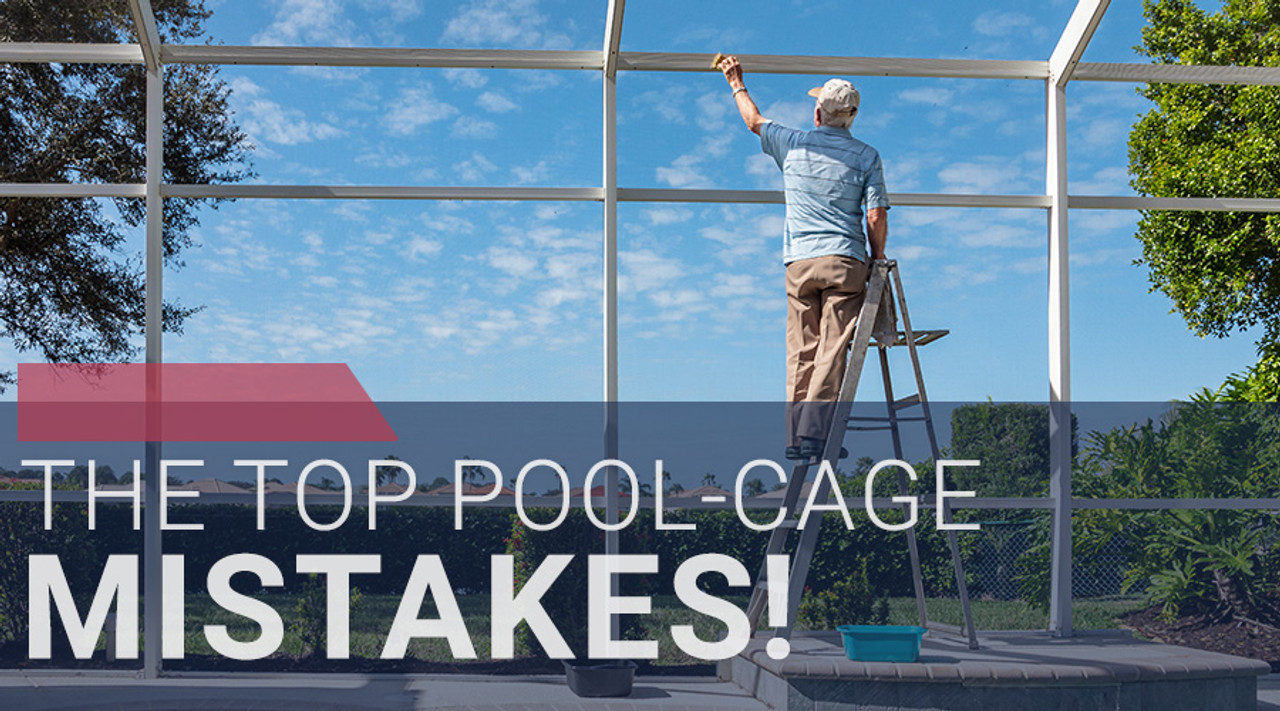A pool cage is one of the best investments you can make for your outdoor space. It keeps pests out, reduces debris in the pool, offers UV protection, and even enhances safety. But when it comes to assembling or repairing one, even small mistakes can lead to big, costly problems down the line. Whether you’re a homeowner tackling a DIY project or a contractor looking to keep every build top-notch, knowing what to avoid can save you time, money, and headaches.
1. Using the Wrong Fasteners
One of the biggest and most common mistakes is using regular steel screws or low-grade stainless fasteners in a pool enclosure. The salty, humid environment in Florida is brutal on metal, and corrosion can set in fast—sometimes within months. Once rust takes hold, it can stain your aluminum frame, weaken structural integrity, and even make screen replacement harder. Always choose high-quality, corrosion-resistant fasteners designed for pool cages to ensure long-term durability.
2. Over-Tightening Screws
It might seem like tightening screws as much as possible will create a stronger build, but in reality, over-tightening can damage your aluminum frame. This creates small “gullies” where water collects, leading to corrosion and weakening the frame. Use the correct torque and a steady hand to keep everything secure without causing long-term harm.
3. Skipping Protective Components
Fasteners in pool cages aren’t just about holding everything together—they also need protection from the elements. Skipping sleeves, caps, or protective systems means water and salt can easily reach the fastener, accelerating corrosion. This small oversight can drastically shorten the life of your enclosure. Our pool enclosure fastener kits add protection and durability to your pool cage and contain everything you need for your installation.
4. Poor Alignment of Frame Sections
If your frame sections aren’t properly aligned before fastening, you’ll create uneven stress points that can cause structural problems over time. Misalignment can also make screens harder to fit correctly, leading to gaps and reduced protection from insects and debris. Always check your measurements twice before securing parts.
5. Neglecting Regular Maintenance
Even the strongest pool cage needs occasional upkeep. Skipping inspections and not replacing worn fasteners can lead to sudden failures, especially after storms. A quick check every few months can prevent small issues from becoming expensive repairs.
The Bottom Line
Assembling a pool cage isn’t overly complicated, but the details matter. Choosing the right materials, avoiding over-tightening, and protecting your fasteners can make the difference between a structure that lasts decades and one that needs costly repairs in just a few years. By steering clear of these common mistakes, you can enjoy a stronger, safer, and longer-lasting pool enclosure.

